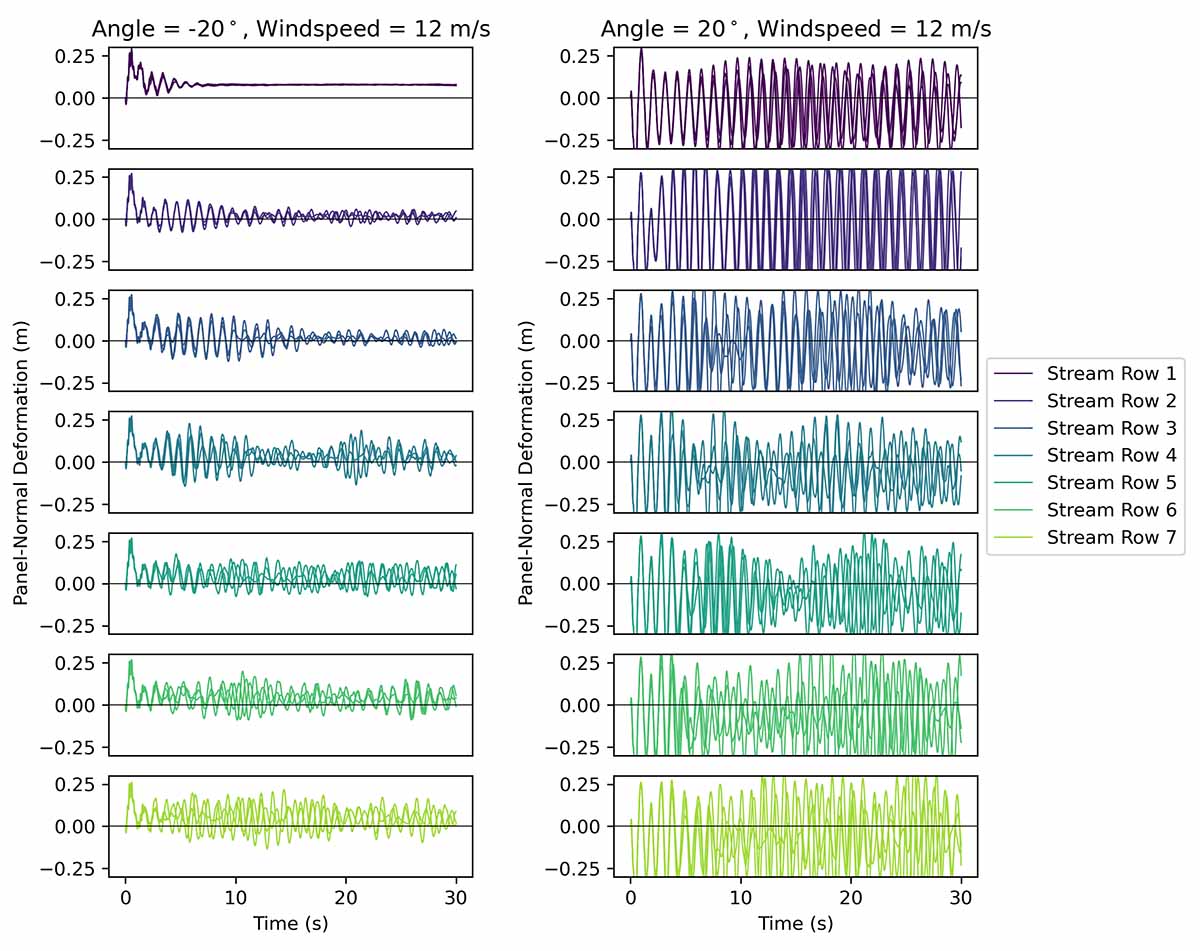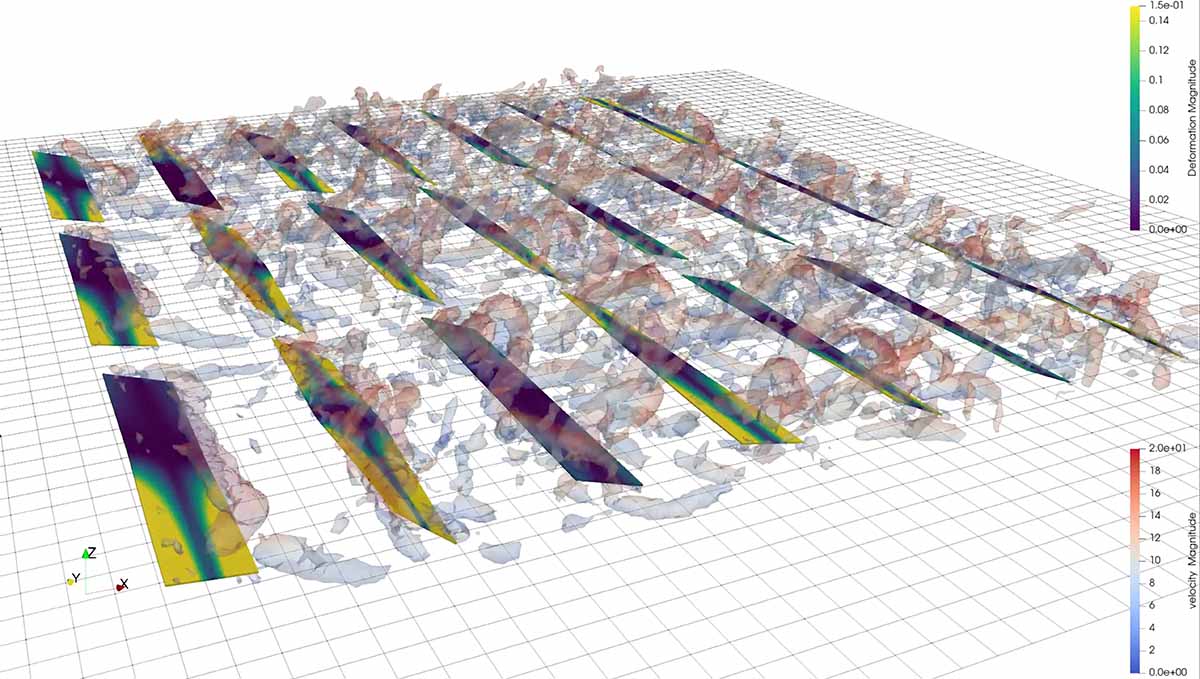A Simulation and Optimization Framework for Managing Wind-Driven Loading on PV Systems
DuraMAT is developing an open-source, multi-physics software package, photovoltaic (PV) aerodynamic design engineering (PVade), to simulate the cascading thermal-fluid-structure interaction that occurs within solar tracking arrays.
PVade enables researchers to test hardware, layout, and tracker control changes in a variety of weather conditions, leading to enhanced stability and reduced wind damage. The software includes a variety of solvers to couple the flow and panel physics, including the effect of turbulent inflow conditions and heat transfer phenomena between the panel and the atmosphere. This enables us to predict how tracker tilt angle and array geometry affect not only aerodynamic stability, but also the degree of convective cooling throughout the array. We are currently working to identify optimized, nonuniform tracker tilt angles that maximize wind resilience or heat transfer, as conditions dictate, while minimizing power production losses.
Tilt angle has a huge effect on the overall stability of single-axis tracking systems in the wind. Large-format modules and two-in-portrait systems are particularly susceptible to torsional fluttering and galloping, even more so when the wind impacts the back face of the modules.
As PV modules continue to trend toward larger, thinner, and more flexible forms, they grow more susceptible to damage from dynamic wind loading. As a result, understanding the impact of wind on PV systems, particularly when mounted on compliant solar tracking hardware, is becoming increasingly important, as is identifying robust, stable array layouts and stow strategies.
Core Objective
Multi-Scale, Multi-Physics Model
Team Members
Ethan Young, Walid Arsalane, Brooke Stanislawski, Xin He, Chris Ivanov, Scott Dana, and Michael Deceglie at the National Renewable Energy Laboratory (NREL)
Impact
By developing an open-source tool that can simulate the real-world stressors affecting solar tracking PV systems—including temperature, wind, and tracker hardware—we can work together to answer questions about which operational choices minimize damaging wind loads and how new systems can be designed for maximized resilience. In the process, we hope to use PVade to build a library of these simulated outcomes to better understand the typical dynamics of wind loading, thereby informing more realistic standardized tests.
Learn More
Young, Ethan. 2024. “Simulating Wind-Driven Loading on PV Systems.” October 2024 DuraMAT webinar on YouTube.
Contact
To learn more about this project, contact Ethan Young, NREL.

The vorticity and deformation in a small section of a single-axis tracking array oriented at 20° in 12 m/s wind.

The maximum simulated deflection at each row in the array. The panels experience much more deflection when tilted at 20° versus −20°.